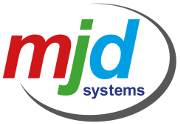Using Microsoft Teams
Today, we are going to create a guide to the most common features you may want to use within Teams and highlight some of our most used and favourite ones within MJD.
To begin with, we’ll explain what Teams is and how it is setup. Teams is an online communication tool created by Microsoft to allow groups of people, teams, to communicate and collaborate easily. It also aims to do this all within one window for you, minimising clutter in your taskbar.
First off, you will need to setup your “Team”, you can have multiple Teams within the programme which can have different collaborators, so you may setup each department of your company as a Team for example. Within each Team, you can have different channels. So for example, within your Engineering Team you may have the following channels; Projects, Drawings, Workshop or you could have your company as a Team, then each department as a Channel. This is where you can completely customise the setup to what will work best for your company.
When any new message or activity takes place within a channel, you will receive a notification and the channel will become bold with a red number next to it for how many new notifications in that channel. You can set your notification settings differently for each channel. When you are in the channel you wish to set your notifications for, click on the three left dots on the top right-hand corner and go to “Channel notifications”. You can then chose to turn them off or have all notifications or set customised notifications.
To see all the most recent activity within your Microsoft Teams, you can use the activity section on the left-hand side. This will show all the most recent activity within your own teams and you can navigate between the updates in the panel on the left-hand side.
To chat to an individual colleague in one of your teams, the chat section is where to do this. You can then chose your colleague and chat/share files. You can also share your screen to demonstrate or show your colleague something you are working on. It can be really useful when showing a colleague how to carry out a task when we are now working from home.
In each conversation, whether that be with your team or an individual colleague, you will see there are a few tabs. The Files tab will show you all the files you have shared within this conversation or channel and allow you to move, open, edit and work together on the files.
You can add tabs to each channel which allows you to collaborate on a variety of apps. The most common one you may wish to add is OneNote to allow you to create a Notebook for that Team so that you can save notes that everyone may need to access, for example, meetings minutes, task lists etc.
Another useful feature to be aware of and make use of is your status. This can be changed by clicking on your profile picture and then choosing a status from the menu. It is worth noting that in the Do Not Disturb status you can setup whose notifications can still make it through to you. This means you can still ensure any high priority messages get through to you, without general and lower priority messages disturbing you.
We can also get Teams to let us know when a team member becomes available, to do this we right click on the Team Member and chose “Notify when available”. Teams will now tell us when their status changes to available by a notification in the bottom left-hand section of the screen. Much like an email notification when you receive a new email.
Hopefully this will help you to get started in Microsoft Teams and get you confident to explore the features but any questions on Microsoft Teams please don’t hesitate to get in touch with the team here at MJD and we’ll be more than happy to help make IT work for YOU.
